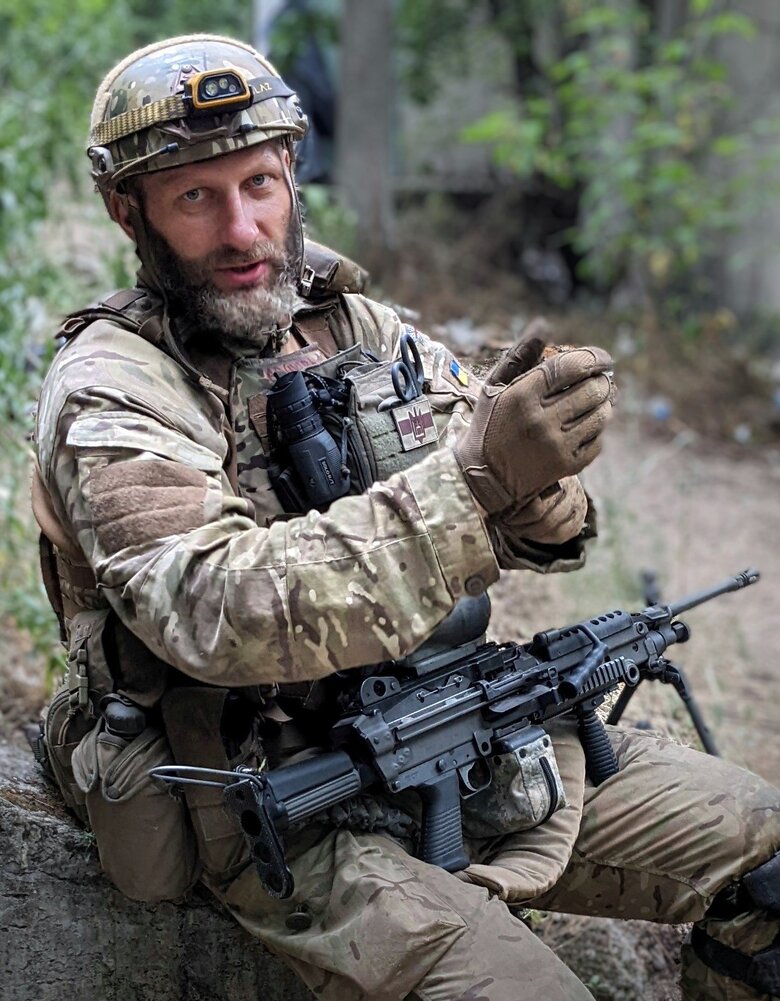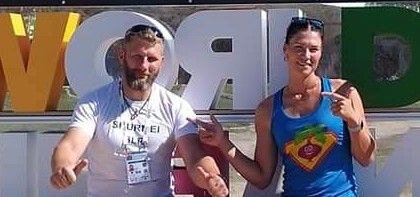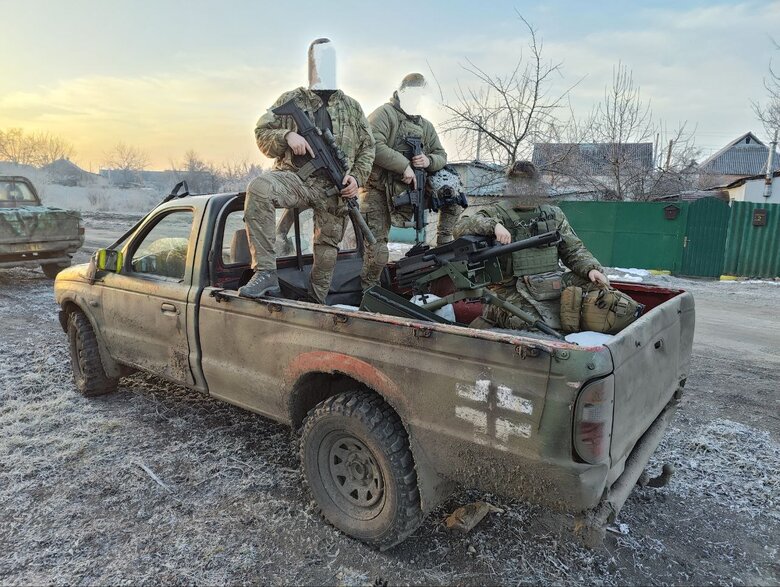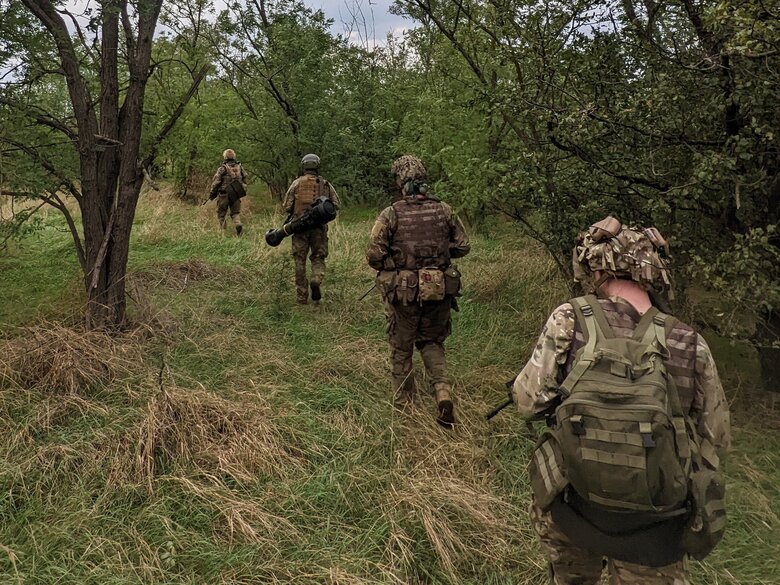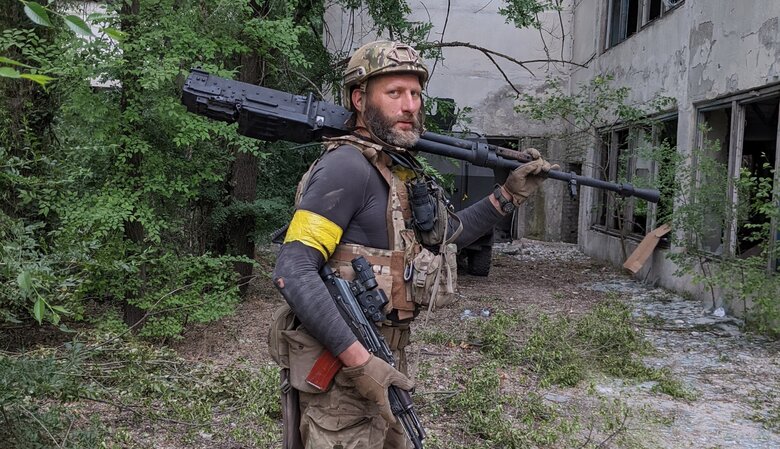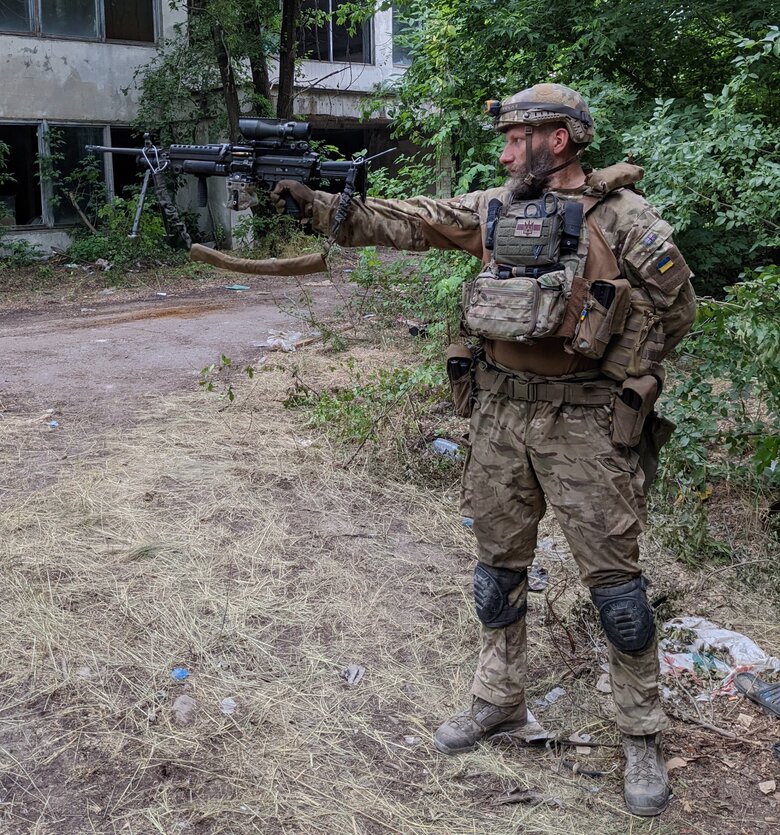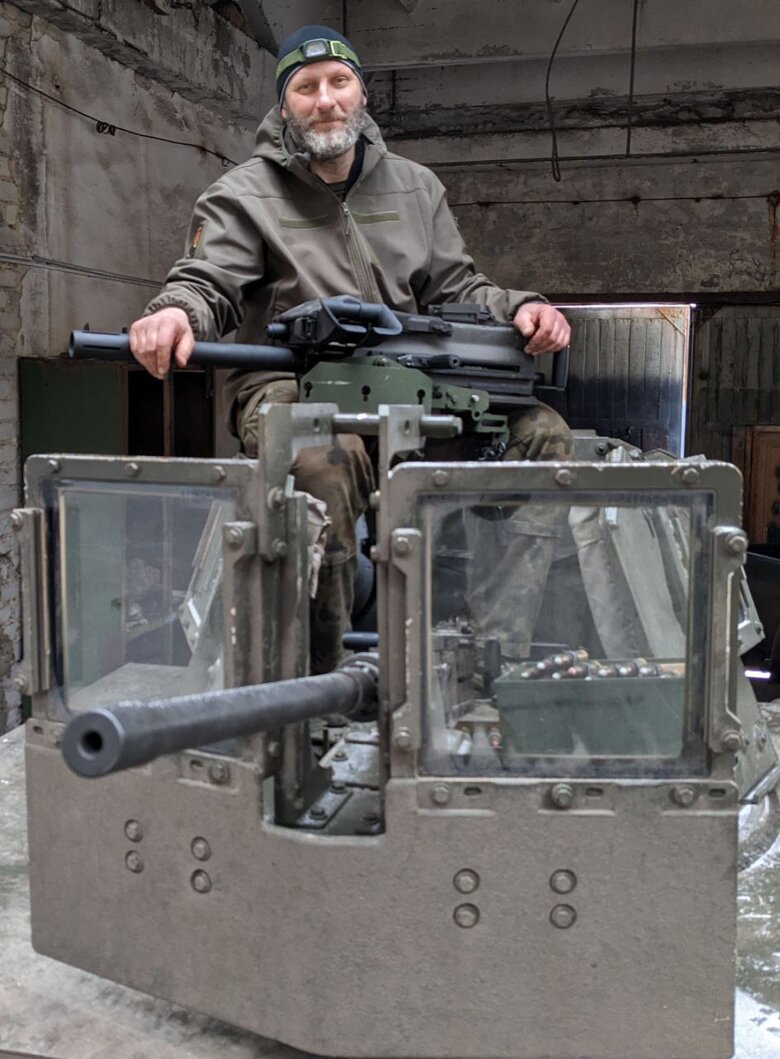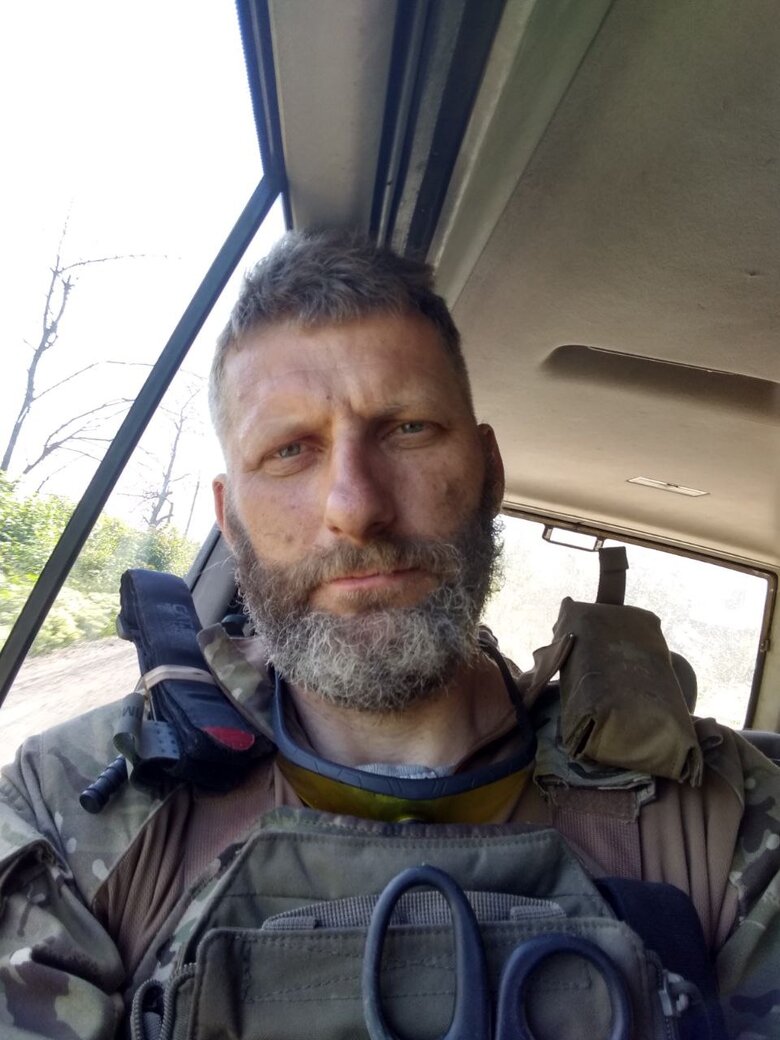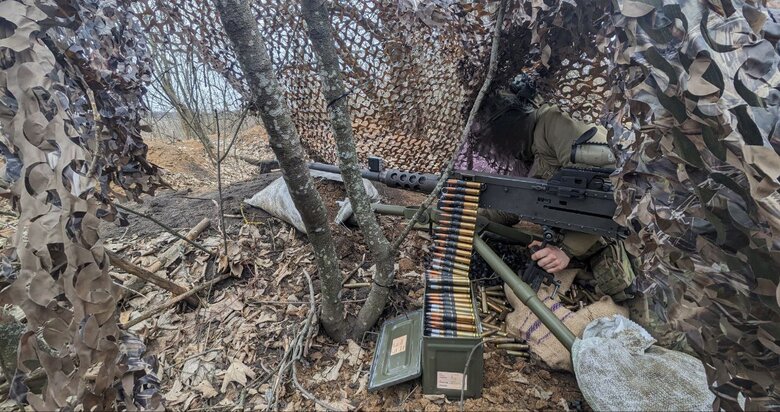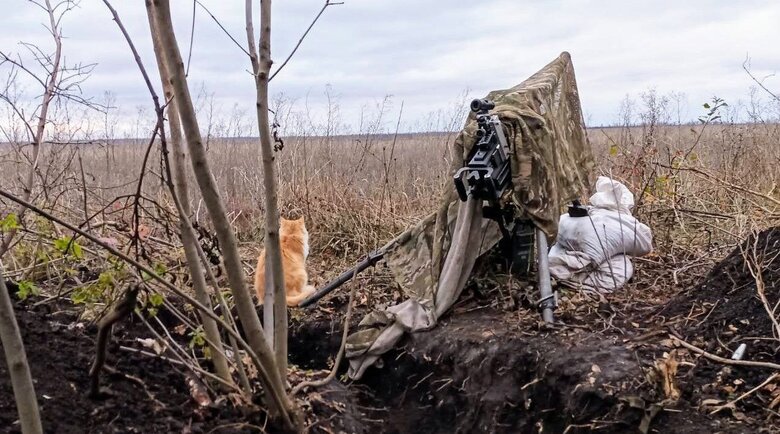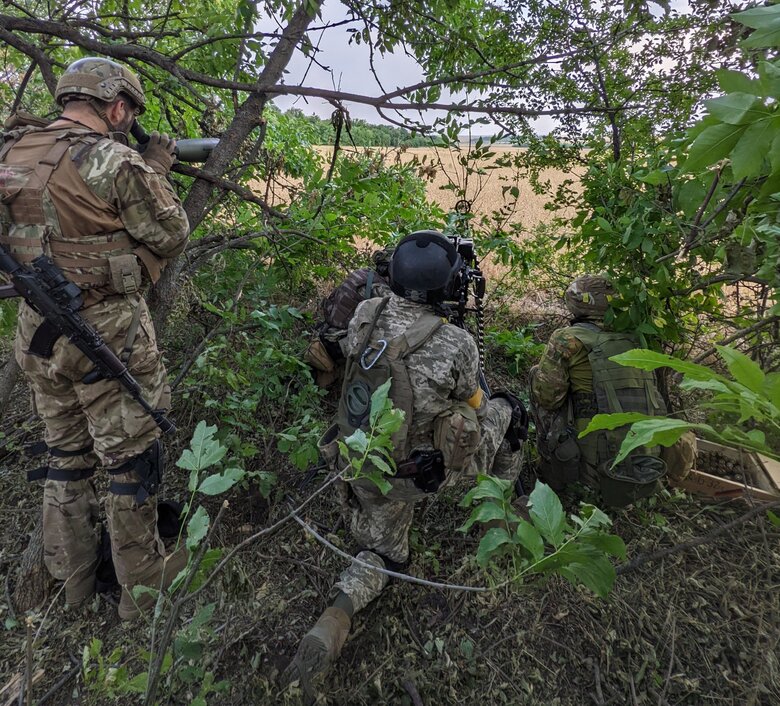Belarusian machine gunner Pavel (Dziadzka) Shurmei: "Everyone is always afraid. The question is how you manage your fear"
Looking through the biography of the hero of this interview, one might think that its different periods are actually about different people, most likely, the same family name.
Pavel Shurmei alone has been rowing for Belarus since the mid-1990s and for more than 20 years. He has set world records on the Concept2 simulator, won international competitions, and participated in the 2004 and 2008 Olympic Games. In general, he belongs to the sports elite of his country and beyond.
Pavel Shurmei has been fighting for Ukraine in the Russian-Ukrainian war since 2022. He fought as a machine gunner in the Kalinowski Regiment, was wounded, received awards from the Ukrainian Defence Intelligence, and two criminal cases for extremism and participation in hostilities from Belarus. In absentia...
- "It seems like two different lives, but one person," I tell Dziadzko. - I want to know how you went from Shurmei the rower to Shurmei the machine gunner. Perhaps your wife, the famous Ukrainian rower Olena Buriak, played a key role here?
-(Smiles) In fact, when I first visited Ukraine in '97, my wife was still 9 years old. It was Bukovyna, hunting in the Carpathians. After that, for more than twenty years, I have been hunting in those places almost every year. In addition, thanks to the sport, I have made many good friends in Ukraine. Plus, until 2014, I regularly visited Crimea.
I don't know how to explain it, but when I was 5 or 6 years old, I saw a music film on TV made for the 1980 Olympics, where Sofia Rotaru sang "My Native Land" in the Ukrainian countryside. And although I was young, what I saw stuck in my mind.
- So you have a connection with Ukraine - from your early childhood. But let's go back to our time. Did you learn about the full-scale war while you were in the US? As far as I know, your wife from Mykolaiv wrote you a message that the city was being bombed.
- Yes, it was like that. We all remember that the situation was gradually heating up - and still no one could imagine that there would be a war... We have a time difference with the US. I woke up and saw that my phone was full of messages. It became immediately clear that something had happened. She wrote: we are being bombed. I think the message was about a heavy bombardment of the military airfield in Kulbakino near Mykolaiv.
- What happened next?
- Within a day, my wife packed up, took her mother, her godmother, her goddaughter, and they left Mykolaiv for Chernivtsi. The godfather saw them off, and a month later he died during the shelling of the Mykolaiv regional administration. He was an ATO veteran, a patriot of his country.
- What about you? Have you ever thought about staying in the US and having your wife move in with you?
- This was not even a question.
- How did you formulate this for yourself? In 2014, you had not yet gone to war, although, according to you, you had such thoughts. Was it not even a question then?
- That's absolutely right. I didn't even think about it - everything just became clear. And in 2014-15, of course, I had my doubts - I must have been thinking about my mother... (here Pavlo tries to hold back his emotions for a few seconds - his mother died during the war, and he was unable to attend her funeral).
- Did you come to Poland from the US first?
- Yes. It became known that Belarusians who wanted to volunteer to fight for Ukraine were gathering in Warsaw (now it is the Regiment Kalinowski mobilisation centre). Of course, when I found out about it, I wanted to get on the first plane to Poland. But my friends, who had been active in the Belarusian opposition national movement since the 1990s, told me not to rush, we had to prepare properly first.
The Belarusians helped with money and supplies. A week later, I flew there with three barrels filled with tacomed and ammunition. I had to spend a few days in Warsaw. There I met my wife, who had already moved to Poland by then.
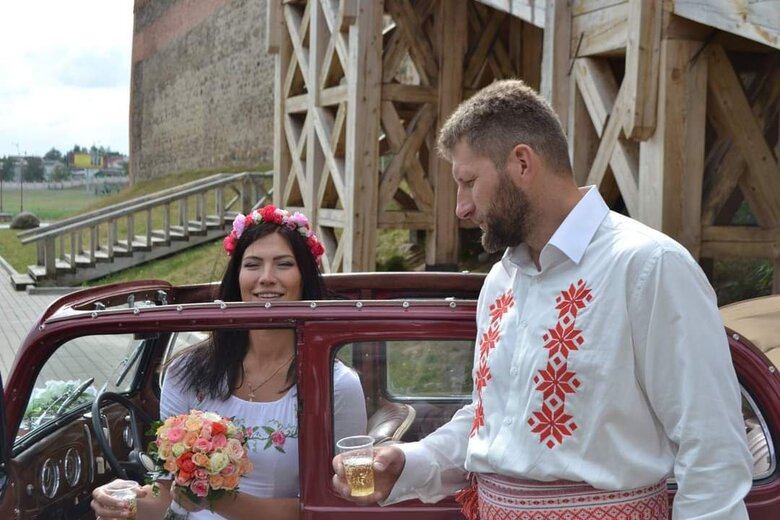
Thanks to the sports community: the Poles, the rowing athletes, helped. One of the Polish rowers, an Olympic medallist, world champion, and later my wife's friend, simply wrote: 'Come and help us. And the Polish rowers bought a minibus. And on 7 March, if I remember correctly, I and a group of volunteers were already on the territory of Ukraine.
- And what happened next?
- At that time, a company of Belarusian volunteers began to form. Starting in 2014, they fought in Ukraine in various units: in the 'Right Sector', where the 'Belarus' tactical group operated; in the OUN, in the 'Donbass' battalion, in 'Aidar' and many other units. Later, many Belarusian volunteers were associated with Azov.
And it so happened that in 2022, the place where they were able to gather - through their connections, through friends - was the Azov Territorial Defence Battalion and the Azov School. That's where we came to Kyiv. For several weeks we trained with Azov; we were taught by Belarusians who had already had combat experience before the open invasion. After that, a new wave of volunteers arrived, who had already come for the full-scale war.
The first combat trip - in early March - was to Irpin. The situation was changing dynamically: we left as Belarusian volunteers of the Kalinovsky battalion in the territorial defence of 'Azov'. We returned as soldiers of the Ukrainian Armed Forces.
- Why you became a machine gunner is quite clear from the point of view of your usefulness to the Armed Forces: a machine gunner needs a strong and hardy person. Did you choose this specialisation yourself?
- I understood that due to my physical shape and data, it would be easier for me to run with a machine gun. Although at the time we were going to Irpen, I unfortunately did not receive a PKM. There were few of them, and I got an RPK-74.
In general, if we had even heavier weapons at that time, I would probably have got them. But unfortunately, we didn't have it.
Later, it so happened that I commanded a platoon of heavy machine guns. It happened rather by accident: after the death of our commander Vanya Brest and the guys near the Lisichansk oil refinery, the unit's command saw that there were only a few professionals among us, volunteers who came to fight the Russians. Yes, we had already taken part in combat operations at that time, but we still had to soberly assess our strength. The command realised that we were not, strictly speaking, 100 scouts and assault men. At that time, there was no one to deal with heavy weapons or support for infantry groups. Or there was no one willing to do it. That is why our unit was reformatted. And in addition to the infantry group, there were a mortar unit, an ATGM unit and a large-calibre machine gun unit.
- How were combat duties distributed?
- Decisions were made collectively; the most experienced of us were the ones who took the directions. When there was no one left for the position of large-calibre machine guns, I was asked: "Dziadzka, will you take care of them?" - "If necessary, I will."
- How long did it take you to master the wisdom of machine guns?
- My main task was to organise the training and living conditions of the soldiers, combat planning and the execution of combat work. I was very lucky to have a young fighter who was keen on machine gun work as my deputy. He was a great help to me.
- I have a mortar guy friend who calls all the mortars he has worked with "machines". He says: 'I worked with a machine, my current machine is this one. What kind of machine do you prefer to work with?
- Good question. I'll name our main large-calibre machine gun - the Browning M2NV (Heavy Barrel), which has been in service with the US Army since the 1930s. It is now used all over the world. It is a reliable and efficient machine that requires good maintenance, and most importantly, straight-handed operators. We have repeatedly seen "killed Brownings" that have fallen into the hands of fighters without proper training. My deputy often helped these guys to learn the ins and outs of working with this machine gun.
The main thing is to unlock the potential of the weapon. Now the war conditions are such that a machine gun is rarely used in the manner of previous wars or as people imagine: you have a machine gun and you are directly targeting the enemy.
- They see it in films. In their imagination, you see the enemy. But nowadays, large-calibre machine guns with a range of up to 2 km are used only for targeting.
- I will say more, not only up to 2 km. In the current conditions, we are trying to work at 3 and 4 km. Everything is important here: the ability to work from closed positions, defensive fire, sighting devices (AGS sights, modified mortar sights) and UAV correction.
- How does it all work in practice?
- Let me tell you about it. You need to understand that the work of a machine gunner, especially a large-calibre machine gun, is often invisible to the operator, the gunner. For example, there is a forest plantation a kilometre and a half away. You can hardly see people running around there. Unless you have optics, and even then it's not a sure thing.
- You are simply told: this is the sector you need to work on.
- Yes, by this landmark. The target is not visible to the gunner, not visible to the men. You work by the landmark. And they correct you on the radio.
- And from a human point of view, is it easier or harder to work behind the opponent's invisible eyes?
- To be honest, I have never thought about it. The question of whether you can kill or not is clear to me: Yes, I can. Will my conscience torment me? No, it won't, because this is the enemy who came with weapons to dictate how we should live and take our lives and the lives of our loved ones.
- There's no better way to put it.
- If you think about it, it's probably easier to work at a distance when you don't see yourself killing people. Although it has happened that fighters say that they are not satisfied with their work as a machine gunner or gunner - precisely because people want to see the enemy they are destroying. Especially after your comrades-in-arms die. Or you learn how civilians die in war. And these fighters want to see themselves killing the enemy. And not to see their BCs planted in the forest a kilometre and a half away...
- Yes, younger guys are more likely to do this.
- Let me give you an example of one assault. It so happened that one of our groups, which was moving along a forest plantation, was stubbornly resisted by the Russians. Our men were pinned down by very heavy fire. It was clear that the longer they stayed there, the less chance they had of leaving without losses. So we were asked over the radio to move the fire to the right sector. We did so. "Good, good, give us more". We added. "That's it, more, more. That's it, well done".
And then, when this group came back from the assault, they said: 'Thank you guys, you managed to hold them down, and we were able to retreat.
- In my opinion, this is more important than seeing the enemy's face.
- Here. I said to the young fighter who had presented me earlier: 'This is the result of your work.
Another example is that it was already autumn in Bakhmut, when we worked with specialists who, in the dark, would approach the enemy or even want to go into the "grey area" to correct the fire of our mortars or snipers. Naturally, the day before, we studied the landmarks and directions. Although it was impossible to see the landmarks at night. And the directions were approximate. We knew the approximate distance. Unfortunately, we did not have thermal imaging sights for large-calibre machine guns at that time.
- In such a situation, are you afraid that you will get hit by your own?
- You are always worried about this, and that is why you try to take into account all the details during briefings before operations to avoid friendly fire.
At the same time, everyone must understand the importance of their work. Otherwise, the soldiers say: we don't understand why we are at this position; we are planting the BCs in the dark.
- What do you say to them?
- We worked with professionals. I understood that if I was given an order, it meant that the specialists needed our work. But two days later I asked one of the scouts to explain to my guys the importance of their work.
And he says: "Guys, during the day we set goals and landmarks. After dark, when the work begins, you open fire. Yes, you may not hit the enemy, you may not cause direct damage. But the enemy starts moving, giving away its location. He tries to move his personnel and vehicles out of the line of fire. This helps us detect them with night vision devices, thermal imagers. Accordingly, we can adjust the work of our artillery. In addition, the noise of your shots makes it easier for snipers to work.
- Cool.
- So it's not always obvious what you're doing. But it's important to explain to people how it benefits them, so that they can do their job even better.
- Each of us knows (many of us know from films) that if a machine gun point is working, the enemy is making efforts to suppress it. Do you try to move to another point after you have worked from one point and realise that the enemy will now cover you?
- This is how positions are prepared according to the rules: a firing point, with a backup firing point nearby. Preferably, a dugout where you can take cover. And not just a dugout, but a good dugout. Again, it all depends on time: how much time you have to prepare this work, to prepare for the operation, what it is. Things often change very quickly. And there is a huge difference between the way things were done at the beginning of the war and the way things are now. Back then, in 2022, there were no active hostilities in our direction. We had to demonstrate our presence to the enemy and disturb them. We helped our neighbours and gained experience ourselves. We moved out secretly, if possible, in "green". We set up our equipment, a large-calibre machine gun. We were waiting for the command. We understood that we had two, maximum 3 minutes to work; and another 2-3 minutes to roll up and get out of there as quickly as possible. Of course, we always do reconnaissance, but that doesn't guarantee that you'll have a prepared position.
- And here, in these 2 minutes, machine gunner Pavlo Shurmei came in handy, as he had a rowing background and impressive physical data.
- Firstly, we already had a large-calibre machine gun, and I was a group commander at the time. My task was to observe, receive the results of the work on the radio and make adjustments.
And secondly, it is not 1 or 2 people, but often 5 or 6 people. At the time, where we were working, it was possible to have a pickup truck jump up to this greenery as quickly as possible. After work, our task was to grab a machine gun, a tripod, and run to the pickup or even a minibus as quickly as possible (it happened).
- Let's talk about the weight a machine gunner has to carry. As far as I remember, the weight of a large-calibre machine gun, depending on the model, ranges from 20 to 60 kilograms?
- Yes, together with the tripod - about 60. Naturally, the tripod and the machine gun are carried separately.
- You also have to carry the BС.
- The BC is taken with the expectation that you'll use it and you won't have to carry it back.
- And what models do the Russians use - the large-calibre Vladimirov, the "Cord", or something else?
- I think the most common is the NSV, also known as the Utes, DShK and "Kordy". And the Vladimirov heavy machine gun is almost always on the vehicles because it is very heavy and powerful.
We had a case where a Vladimirov machine gun was used. However, it was in the anti-aircraft version on a tripod. The whole thing weighed 150 kilograms. The gun itself was heavy, the tripod was heavy... But it was okay, we managed. We did everything very quickly, it wasn't far to run to the bus on the "green". In general, all these sorties, what we call "hop-stops", are usually carried out in a complex. We can do this with a large-calibre machine gun or MK-19 (AGS). Often, we install weapons in a pickup truck.
- What do your (and not only your) "hop stops" look like now?
- UAVs have changed a lot (despite the fact that they help us with fire control). Now it all happens, as we call it, in the "grey area" - either early in the morning or late at night, i.e. at 4-5 am; or late in the evening. More often at 4-5 am, because the human factor is important here. No matter what anyone says, those who work all night are already very sleepy in the morning. And those who have to work in the early morning either haven't woken up yet or are having a hard time. That's why you use this time. As a rule, you work together with mortars and UAVs. You plan, choose the targets you can reach. For the MK it's 2km, for the Browning it's 3-4km. And with a turret or a tripod mounted in a pickup truck...
- Clarify for the reader what a turret is.
- A mounting device for machine guns or small-calibre guns, which provides, with the help of special systems and drives, the aiming of weapons in horizontal and vertical planes.
- ...and this turret rotates in a circle.
- Ideally, 360 degrees. But it all depends on the vehicle. By the way, in recent months, pickup trucks with turrets have been actively used by mobile air defence teams to shoot down enemy drones. If not in Kyiv, then in the east and south, everyone has seen them. These are Mykolaiv, Kharkiv, Zaporizhzhia, Kherson, Kropyvnytskyi, Cherkasy...
- Let's continue talking about "hop stops".
- So, as a rule, late at night or early in the morning, we, the instigators, move towards the line of contact, towards the zero. Preferably as safely as possible. We fight back using landmarks. We understand that it is great if you can hit the enemy, but our task is different. We need to raise the enemy's spirits, to disturb them. That's why we don't need to spend a lot of points on this. We work out the box on MK-19 - and we take the legs away as quickly as possible, but carefully. Why carefully? Because the roads at zero are usually in the middle of minefields; they are a broken track with mines to the right and left of it. So you can't get stuck, as you will become a prey for enemy UAVs or artillery. You can't go around it either. And you start running away from there. (With sarcasm. - E.K.) At a speed of 10-15 km per hour...
At the same time, everyone now understands the saturation of UAVs on the frontline. This is the main danger. You need to understand that you may not be safe even 2 km from the front line or 3 km away. But at the same time, you have done your job - you have raised the enemy.
- It created a fuss, a movement.
- Yes, and if you hit someone and caused an evacuation, it's even better. The enemy starts to move, and at that moment mortars, UAVs, FPV strike or mavic drops are fired at them.
- Last year, there were many evidences of Russian "meat assaults". Especially near Bakhmut, where you had to fight. Have you ever been in such situations? Or does working with a large-calibre machine gun exclude it - simply because you usually don't see the enemy?
- I personally have never been in such situations. But you know, when a large-calibre machine gun is firing and you are, for example, in a landing zone, and it starts cutting down trees above you - branches and splinters fly...
- ...you just lie there and pray?
- ...you press yourself as deeply into the ground as possible. That's why meat assaults... Our Belarusian fighters who had to face this said that afterwards they just had to take up positions among the corpses of Russians.
I myself once got hit by a large-calibre machine gun.
- Were you scared?
- Everyone is always afraid. The question is how you manage your fear. We were covered by a garage made of gas silicate blocks. And fortunately, we were downhill from the enemy. I saw him start to "dismantle" this garage. Apparently, he was told the sector where we were, and he started combing it.
- There was no time to be afraid, you had to turn away...
- I had to get out of there. It was good that he was taller and behind the parapet. He just couldn't physically get there.
- Let's talk about Kalinowski's regiment. In an interview with my Belarusian colleagues, you touched upon the peculiar "specialisation" of Belarusians in this war. Among the "Belarusian" military professions you mentioned were paramedics, signalmen, mortar operators... did I not mention all of them?
- Yes, these are paramedics, communications, mortars, UAVs, fire support groups. There are still groups of scouts and assault soldiers.
- Is there any explanation for why Belarusians take these particular jobs?
- I have already mentioned that the reformatting of the 'Volat' battalion after the deaths of the guys near Lisichansk played a key role here. We analysed the situation: how long does it take to train an infantryman, an assault pilot, a scout? I will ask a tough question: how long is his life? How many people - again, very harsh words - will be benefited, what will be his efficiency?
- It's tough, but war is not about humanity at all.
- We see what modern warfare is turning into. First, the emphasis is on remote work and the use of UAVs. Secondly, the human factor. Let's take recruitment after a young soldier's course, 10 recruits. For the most part, where do they want to go? "We are assault scouts." - Guys, listen, let's think broadly: we need ATGMs, machine gunners, mortar operators. We need to learn how to destroy the enemy at a distance, to hit them, to bring even more benefit. Most of you will be mortar operators, UAVs, paramedics, etc.
No, all the same, these conditional 10 people are going to be scouts and assault soldiers. And in their first combat missions (especially if they get caught up in the middle of something), 2-3 guys may be killed or wounded, or get contused... And they'll be lucky if they're in the 300th... Four or five more immediately realise that they'll be more useful in UAVs, mortars or med evac.
In general, out of these 10, only 1-2 will actually remain in the scouting and assault soldiers. These are the realities of war. You need to have iron balls and a steely character to be an assault man.
- Conclusion.
- In my opinion, if you have the time and resources, after psychological tests it becomes clear whether a person can do assault work. Then you can gradually prepare him for assault work.
- I am afraid that Ukraine does not have this luxury.
- Of course it doesn't. That's why this selection process takes place. And it is better to learn to hit the enemy at a distance with as much efficiency as possible.
- Let us remember some of your fallen comrades. So that the memory of these people will remain - including in this text. Who do you remember?
- How to choose three out of many dead?
- And yet.
- The first is Miroslav Lazovsky. A true patriot of Belarus. A father to his soldiers. A man who was born to become a general. His call sign was Mysh, and we jokingly called him General Mysh.
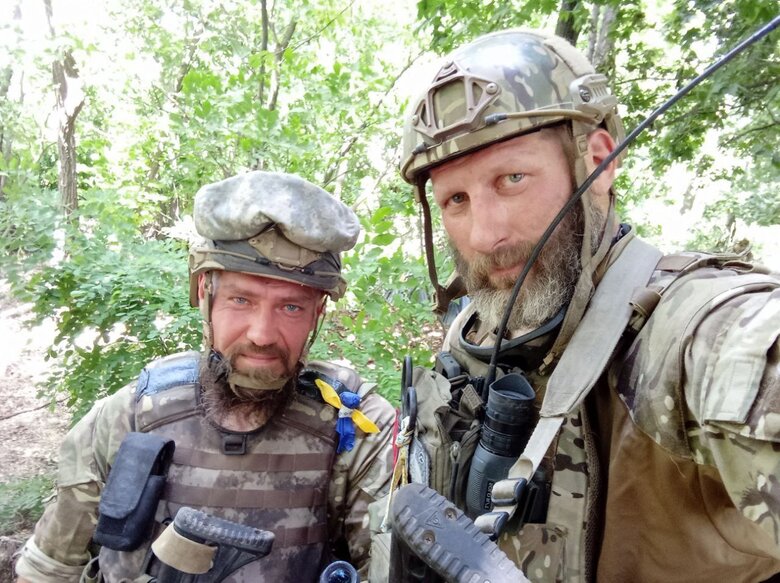

Vanya Brest and Pasha Volat are among the founders of Regiment Kalinowski.
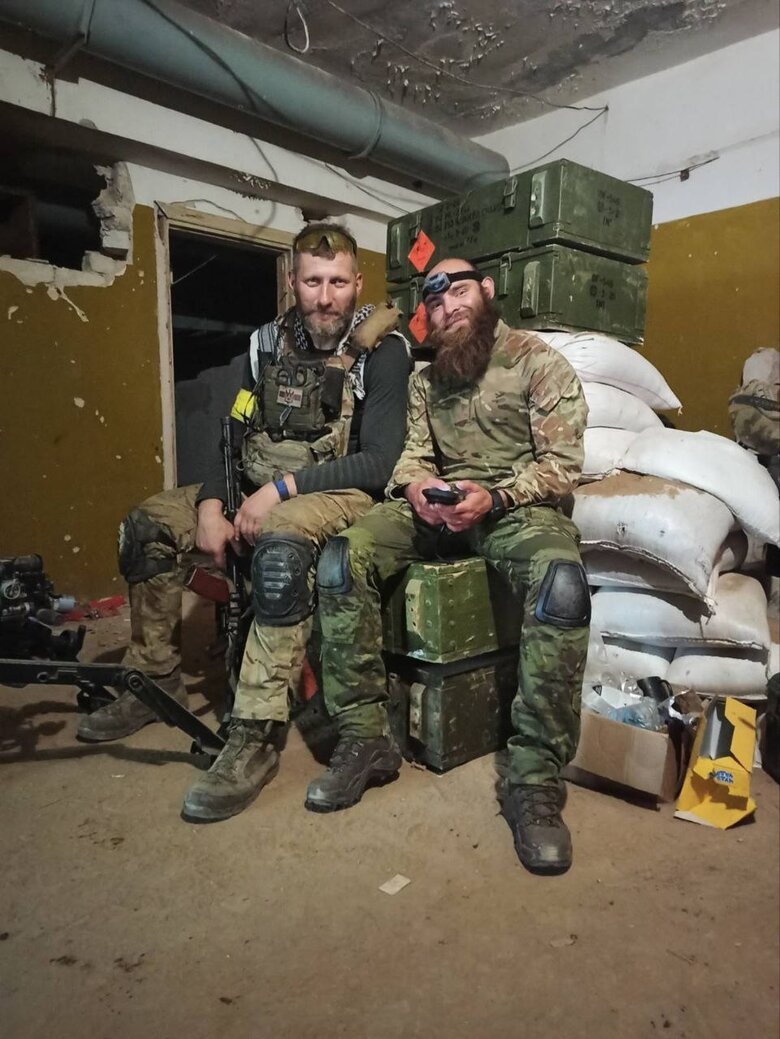
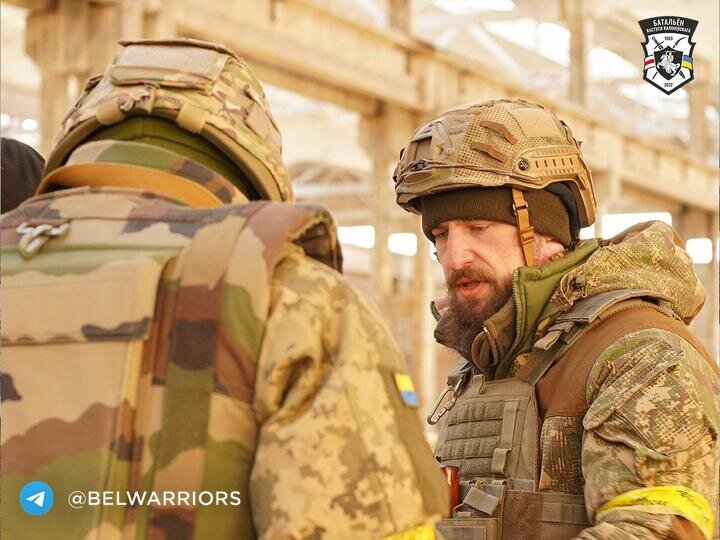
And also one of my fighters who died carrying a wounded comrade.
-How did this happen?
- Tank shelling. Two machine gunners were carrying a third wounded soldier. There was an explosion and a ricochet from the building. One of them was lucky, so to speak, as he had a concussion: a shrapnel severed the earpiece on his helmet. Although everything could have been completely different.
The one who died was killed by a small shrapnel. After the explosion, the soldier, according to his comrades, ouched and fell down. When they took off his body armour, they found a spot of blood 5 centimetres in diameter on the side panel. And a hole. A very small fragment had pierced the side panel.
Accident or fate? I don't know...
To the question of fate. We were lying near Mykolaiv. A drone took a picture of us when we came under heavy mortar fire in an open field. And next to us, there was a water reclamation trench. It's not in the ground inside, not a channel, but a gutter on top. And lucky for us, over time, this gutter was covered with earth, so it turned out to be a kind of parapet. And so two comrades-in-arms, who were 10 metres away, were contused. One of them was hit very hard, his eardrums were torn. I was thrown up, but I'm still alive and well.
- How did you get injured more than a year ago? Tell us.
- Again: lucky or unlucky. It was on the outskirts of Bakhmut on the night of 19-20 January 2023. We were rotating groups in a Hummer and, unfortunately, stayed for a long time with a lot of people. Although it was dark, and we were far from the enemy, their drone spotted us. The shelling started, and I think it was tank fire, because of the terrain and the way it came in, it was throwing us over and couldn't hit us. It was much easier for a mortar to do that.
We survived the first round. There were 8-10 shots, a pause, and then the shelling started again. One foreigner was wounded. The other one just got caught in a big backpack and fell down badly. The man could not move normally. And it so happened that I stayed with them to help them. After the first shelling, when everything calmed down, my fellow Belarusian joined me. Since the Hummer, unfortunately, stalled, we were waiting for a vehicle to arrive, a tracked vehicle that would take the wounded and try to help us with the Hummer.
And at that moment the second shelling started. I felt calm, because I saw that he was throwing over, he couldn't hit us. And with the last shot, he hit the tree around which we were lying. I was wounded by shrapnel from above - and quite lightly compared to the other Belarusian. He is now in the US for further treatment and rehabilitation, and God willing, everything will be fine.
- What did the doctors tell you?
- What did the doctors say?(Shows his wounded arm. - E.K.). Let's just say that I can drive a car, stroke my wife, fry eggs and take part in combat. Maybe not everything is as I would like it to be. Until someone asks me about my arm, I don't think about it. That's all.
At first, the doctors said everything was fine, 3-4 months. But then with each new medical institution, the period increased: 6-7 months and, finally, a year! And indeed, in a year I was already taking part in combat work.
The nerve can take up to 18 months to recover. I was told: whatever is recovered in 18 months is yours. There is another option - to have an operation if I am not satisfied with the quality of life.
-And how do you see your future in this war?
- I will try to do everything to ensure that as many Belarusians as possible join us. And not just join, but gain the necessary experience and stay alive to defend Ukraine and liberate Belarus.
Attention: Those who wish to help Kalynovskyi's regiment with the purchase of electronic security systems that will save the lives of soldiers from enemy drones, can donate here:
https://send.monobank.ua/jar/6higx2qyCs
Top up the envelope via Privat24:
https://www.privat24.ua/send/1w191
The envelope card number:
5168752106654273
Paypal:[email protected]
Yevhen Kuzmenko, Censor.NET
Photo: Pavlo Shurmei's archive

